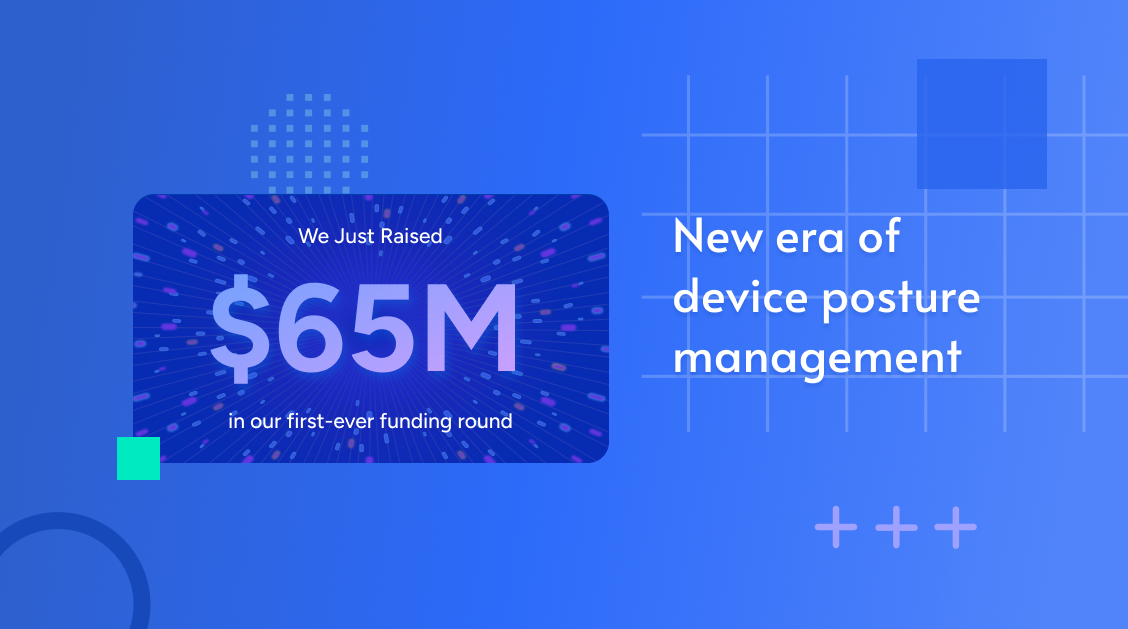Security leaders invest heavily in the front door: phishing defenses, malware de...
Active Directory: Security Gaps and the Silent Risks You Can't Ignore

Active Directory (AD) is the powerhouse of the enterprise — the central hub where identity, access, and control converge. Yet despite its critical role, AD generally flies under the radar until something goes very, very wrong. That destructive potential is not altogether surprising given AD's role as the beating heart of identity, authentication, and access control for most enterprises. The Active Directory is a database connecting users, devices, services, and applications. But it's also more than that — it’s an ever-changing system with decades of accumulated policies, legacy accounts, inherited permissions, and interdependencies.
With every new hire, service, or application, the complexity increases. Add in mergers and acquisitions, changes in IT staff, and shifting business requirements, and you’re left with an intricate, fragile web that’s nearly impossible to untangle and all too easy to exploit.
As such, any compromise to the Active Directory can bring operations to a standstill, disrupting critical services and functionalities.
As scary as that may sound, scarier still is fact that you may have already punched your ticket for such a destination without even knowing it. Many organizations are one misconfiguration away from disaster, and don't even realize it.
Misconfigurations — settings, permissions, or policies that are incorrectly or incompletely applied — can go undetected or uncorrected for years. And when they exist in Active Directory, they can turn what should be your strongest defense into an easy target for attackers.
It's an uphill battle just to keep track of such issues. And even if you find your way around that particular challenge, good luck prioritizing remediations when misconfigurations represent business as usual and you're yet to pay the price.
With enough time and misconfigurations, an attack is not a matter of if but when. The extended exposure window gives adversaries the advantage — turning any given endpoint into an open entry point.
Active Directory Misconfigurations
In a perfect world, every lock, gate, and window in your digital estate would always be sealed tight. But the reality is messier.
Security teams today are stretched thinner than ever — overburdened by endless alerts, juggling competing priorities, and often understaffed. Alert fatigue sets in as critical warnings get lost in a sea of noise, and every day feels like a race against time. In this pressure cooker, even the most vigilant teams can miss something big.
And misconfigurations are easy to miss — they're subtle, and aren't tidily tagged or tracked with CVEs. They're multivariate functions of permissions, account settings, defaults, connective architecture, interoperability, backward compatibility, and required functionality.
Mismanage that delicate balance and you can quickly find yourself facing downtime, compliance violations, or breach. Heck you may hit the trifecta and get them all at once!
To prevent the worst, it's recommended you focus on these common culprits:
Overprivileged accounts
Far too often, domain users inherit administrative privileges — sometimes unknowingly granted through careless group memberships or unchecked inheritance.
It’s like giving your local barista the master key to the entire office building. Such unchecked access could give attackers an easy path in and through, as they move laterally through the organization. It can be the difference between a between a breach that's incidental and one that's truly consequential.
Stale or orphaned objects
Forgotten accounts from departed employees, obsolete service accounts, and old computer objects (laptops, servers, or desktops that were once connected to the domain) clutter your AD forest.
Long after their usefulness has been exhausted, these digital “ghosts” retain sensitive system access that can be used by bad actors to breach your environment.
Weak or unconstrained delegation
Delegation allows services to act on behalf of users, but when it’s left unconstrained, it can be weaponized for lateral movement.
This is like giving your car keys to a valet — and instead of just parking your car, he takes your credit card and garage remote from the glove compartment, then proceeds to rifle through your bank account and home.
Default settings and legacy protocols
Many organizations still tolerate weak encryption methods, disabled Kerberos pre-authentication, or leave default credentials intact.
These outdated settings open windows for attackers to harvest credentials, escalate privileges, and move through your environment undetected.
These aren’t edge cases or rare oversights; they’re business-critical gaps that often stay invisible until it’s far too late. The longer they linger, the higher your risk exposure, and the greater the potential financial and operational fallout.
Real World Breaches: AD as the Weak Link
Given the pace and pressure of modern IT operations, it's only natural to experience occasional oversights. Still, operators must remain vigilant — should any aspect of AD hygiene be overlooked, it will certainly be at their own peril. Over the years, AD has played starring roles in some of the most malicious campaigns and significant breaches.

As one example, in February 2024, the Cybersecurity and Infrastructure Security Agency (CISA) and Multi-State Information Sharing & Analysis Center (MS‑ISAC) issued an advisory about a U.S. state government organization that was compromised due to a former employee’s still active AD account.
The administrator credentials were reused by attackers to connect via VPN and access internal systems, including a domain controller via LDAP queries.
Noteworthy as it was, that case may be more rule than exception, as CrowdStrike revealed nearly half of tested environments maintain overprivileged group membership “Domain Users” with admin rights. Such undue configuration risks make it possible for attackers, with even low-level account access, to rapidly escalate privileges and move laterally — gaining full control across the domain while evading detection through traditional means.
Additionally, insecure AD configurations can provide attackers with opportunities to execute Kerberoasting or Golden Ticket attacks. These attacks effectively allow adversaries to forge domain credentials and gain “god mode” access to your systems.
And once attackers gain administrative control of domain controllers, they often extract the NTDS.dit database, which contains password hashes for every account in the domain — effectively handing them the keys to the kingdom.
All of these examples are not isolated incidents but reflect a broader, persistent problem for large organizations and enterprise environments — underscoring the urgent need for organizations to harden their Active Directory configurations before it's too late.
Taking Control of Your Active Directory Security
For organizations relying on traditional, manual methods to manage Active Directory risks, securing AD demands ongoing discipline and constant vigilance. There’s no “set it and forget it” shortcut because AD evolves constantly with every new user, system, policy, or application.
You need both scheduled audits and continuous monitoring to keep up with change, as well as the ability to enforce your policies:
Start with structured, quarterly audits
Native tools like PowerShell, Active Directory Administrative Center (ADAC), Group Policy Management Console (GPMC), and Active Directory Users and Computers (ADUC) help catch outdated accounts, unused objects, and risky permissions before they become major problems.
Why quarterly? It strikes the right balance between too-frequent (weekly) checks and overly lax (annual) reviews, especially in dynamic environments where staff turnover, software changes, and growth introduce new risks.
But don't stop there
Even regular audits aren't enough, as misconfigurations can emerge between them, leaving long exposure windows. That’s why continuous monitoring is essential.
Tools like BloodHound or PingCastle can help map relationships and permissions across AD, but they require deep expertise and manual effort to use effectively.
Reduce blind spots
Enforce the principle of least privilege across AD. This means granting users and admins only the permissions they need — nothing more.
Periodically review group memberships and delegation permissions using tools like ADUC and GPMC, and create policies that restrict excessive privileges by default. Document all changes and use change control processes to avoid accidental privilege escalation.
Beyond Technical Risk: Why Leadership Must Care
Because Active Directory misconfigurations reside in permissions, policies, and settings rather than in software code, they frequently slip through compliance audits and standard vulnerability scans.
And the impact of AD misconfigurations goes far beyond technical risk. A successful attack leveraging these weaknesses can halt operations, corrupt critical data, and severely damage an organization’s reputation.
From a leadership standpoint, ignoring Active Directory creates a blind spot with potentially catastrophic consequences. Treating AD configurations as an area of significant strategic risk is both prudent and essential for safeguarding the organization’s future.
Security leaders should frame AD hygiene as a business risk by linking it directly to operational continuity, regulatory exposure, and brand trust. Thankfully, for those that take the risk seriously, there’s a way to keep things locked down without the usual headaches and hair-pulling. Remedio’s continuous, configuration-first security platform takes all that heavy lifting off your plate.
It gives you real-time eyes on AD misconfiguration, overprivileged accounts, and delegation slip-ups, minus the noise and manual madness. Intuitive dashboards translate complex data into clear business insights, empowering you to act decisively and keep your AD environment continuously secure.
So, why wrestle with clunky scripts, patchy tools, and those dreaded last-minute audits? Take charge of your AD security — lock the doors tight, stay steps ahead of attackers, and turn security from a scramble into a strategic win.
About Author

Linda Ivri
Fueled by curiosity, Linda is a senior marketer who thrives on decoding the complex challenges where cybersecurity meets business operations.
Subscribe to
our Newsletter
We are ready to help you until and unless you find the right ladder to success.
Related Posts
Join over 25,000 in beating the failure of strategies by following our blog.
If a threat falls in the SOC and no one ties it to revenue, does it really make ...
7 minute read
Picture the legendary Metropolitan Opera House on opening night. The air hums wi...
6 minute read
In cybersecurity, the smallest missteps can lead to the biggest breaches. Take B...








Comments